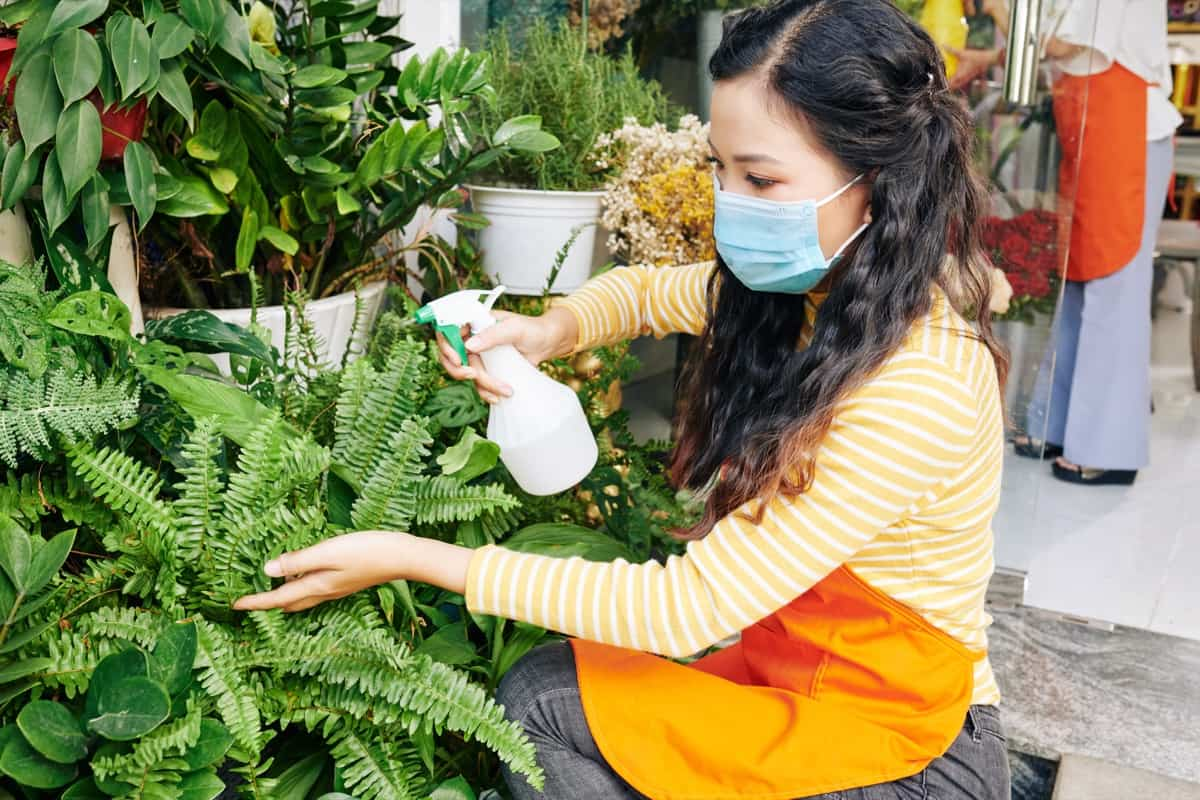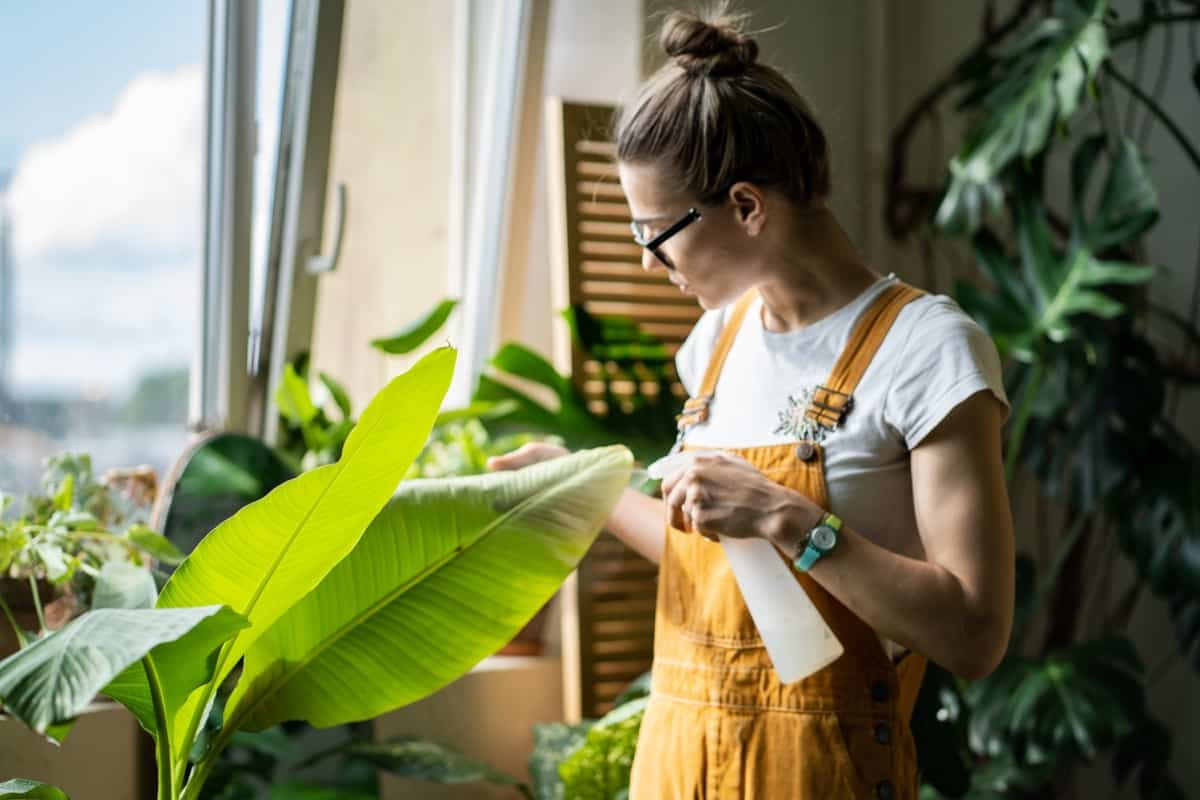Gardening is an art and a science, requiring knowledge, patience, and the correct tools to foster lush, healthy plants. One such tool that has proven exceptionally beneficial is the rhubarb leaf spray. Harnessing the inherent properties of rhubarb leaves, this natural concoction can effectively control various pests and diseases that commonly afflict garden plants.

Homemade Rhubarb Leaf Spray for Pest and Disease Control
What is Rhubarb Leaf Spray?
Rhubarb leaf spray is an organic, homemade pest and disease control remedy made primarily from the leaves of the rhubarb plant. This naturally-formulated pesticide is well-regarded for its efficacy in controlling numerous pests and diseases. Rhubarb leaves contain toxic compounds to certain pests, allowing them to act as a potent deterrent.
Utilizing these inherent qualities, the rhubarb leaf spray can provide a natural and eco-friendly alternative to chemical pesticides. Interestingly, the concept of using rhubarb leaves for mite control and as a broader insecticide is not a recent invention but has been practiced by knowledgeable gardeners for many generations.
What Are the Ingredients Needed to Make Rhubarb Leaf Spray?
The ingredients needed to prepare a homemade rhubarb leaf spray are simple and readily available. You will need several large rhubarb leaves, water, and a bit of mild liquid soap. The soap acts as a surfactant, helping the spray stick to the plant surfaces. For those looking to create a larger batch, remember the ratio – typically, you’ll need one cup of chopped rhubarb leaves for every liter of water.
Recipe/Prepare Rhubarb Leaf Spray at Home
To make your homemade rhubarb leaf spray, thoroughly wash the rhubarb leaves and then chop them into small pieces. Once prepared, add the chopped leaves to a large pot of boiling water. Let the mixture simmer for approximately half an hour before removing it from the heat. Allow it to cool completely. Once cooled, strain the liquid into a suitable container, squeezing the leaves to extract as much liquid as possible. Prepare your rhubarb leaf spray for utilization by incorporating a small quantity of gentle liquid soap into the filtered liquid, ensuring thorough agitation.
How Does Rhubarb Leaf Spray Work?
Rhubarb leaf spray works by leveraging the toxic compounds found in rhubarb leaves. When pests ingest these compounds, it disrupts their digestive system and leads to their demise. For diseases, the rhubarb leaf spray creates an unfavorable environment for their growth and multiplication. The soap in the spray helps it adhere to the surfaces of plants, ensuring long-lasting protection.
What Pests and Diseases Can Rhubarb Leaf Spray Control?
Rhubarb leaf spray is versatile and capable of combating many pests and diseases. It has proven effective against common garden pests such as aphids, mites, and caterpillars. This is why it’s often recommended as an excellent choice for rhubarb leaves for mite control. As for diseases, it can help control various fungal and bacterial infestations, including powdery mildew and black spot disease.
How to Store Rhubarb Leaf Spray?
After preparation, you can store your homemade rhubarb leaf spray in a cool, dark place for up to a week. It’s important to keep it in a tightly sealed container to prevent evaporation and the loss of its potency. Before each use, give the container a good shake to mix any settled contents.
In case you missed it: Homemade DIY Epsom Salt Solution for Pests and Disease Control: Recipe for Natural and Organic Benefits of Plants

How Often Should You Use Rhubarb Leaf Spray for Your Plants?
When it comes to applying rhubarb leaf spray, consistency is key. Applying it once every week or two can be beneficial as a preventative measure. However, if you notice a serious infestation, you may need to apply it every few days until the issue is resolved. Remember, it’s always better to err on the side of caution and avoid overuse, as this can harm beneficial insects and your plants’ health.
Best Time to Apply and How Much Rhubarb Leaf Spray Should You Use For Your Garden Plants
The optimal timing for the application of the rhubarb leaf spray is during the early morning or late evening hours, when ambient temperatures are comparatively lower. This reduces the likelihood of the spray evaporating before it has a chance to work effectively. As for the quantity, a light, even coverage on all parts of the plant, especially the undersides of the leaves where pests often dwell, is recommended. Remember that more is not always better – excessive application might not necessarily increase effectiveness and could harm your plants.
How Long Does It Take for Rhubarb Leaf Spray to Work for Your Plants?
While the precise timing can vary depending on the severity of the pest or disease problem, generally, you should start to see improvement within a few days of the initial application. It’s important to remember that rhubarb leaf spray is not a one-time solution. Regular applications are necessary to maintain their effectiveness and ensure the ongoing health of your plants.
Benefits of Plants of Using Rhubarb Leaf Spray in the Home Garden
Rhubarb leaf spray offers numerous benefits to the home gardener. Its most prominent advantage is its ability to control pests and diseases naturally, without the need for synthetic, potentially harmful chemicals. Furthermore, it’s cost-effective, easy to make, and utilizes ingredients you likely already have on hand. Notably, rhubarb leaf spray contributes to a healthier garden ecosystem by reducing reliance on non-renewable, polluting pest control methods.
Safety Precautions When Using Rhubarb Leaf Spray
Though rhubarb leaf spray is natural, it’s crucial to remember that it can still be harmful if not used properly. Wear gloves while preparing and applying the spray to avoid skin irritation. It’s also advisable to keep children and pets away during application to prevent accidental ingestion.
It is advised to refrain from applying the spray onto the consumable sections of your plants. This caution is particularly crucial when dealing with rhubarb leaves, which contain a substance called oxalic acid. Ingesting excessive amounts of this acid can pose potential health risks. Adhering to these safety precautions will guarantee that your application of rhubarb leaf spray maintains its efficacy while prioritizing safety.
In case you missed it: Homemade DIY Baking Soda Solution for Pests and Disease Control: Recipe for Natural and Organic Benefits of Plants

Conclusion
Rhubarb leaf spray represents a cost-effective, environmentally friendly, and efficient solution to the garden’s common pest and disease problems. Its simple preparation and application make it an accessible tool for gardeners of all experience levels. However, as with any pest control method, it requires careful and consistent use for maximum effectiveness.
It’s crucial to remember that rhubarb leaf spray, like any other pesticide, should be used responsibly to protect your garden’s ecosystem and your health. While there is no one-size-fits-all solution to pest and disease control, incorporating strategies like rhubarb leaf spray can go a long way in promoting your garden’s overall health and vitality.
- Feed Your Flock for Less: Top 10 Tips to Save on Chicken Feed
- Ultimate Guide to Ossabaw Island Hog: Breeding, Raising, Diet, and Care
- Hatching Answers: The Top 10 Reasons Your Chickens Aren’t Laying Eggs
- Eggs and Economics: Breaking Down the Cost of Raising Backyard Chickens
- Defend Your Greens: Proven Methods to Keep Iguanas Out of Your Garden
- Ultimate Guide to Cinnamon Queen Chicken: A Comprehensive Guide for Beginners
- Ultimate Guide to California Tan Chicken: Breeding, Raising, Diet, Egg-Production and Care
- Ultimate Guide to Marsh Daisy Chicken: Breeding, Raising, Diet, and Care
- 10 Types of Chicken Farming Businesses You Can Start for Profits